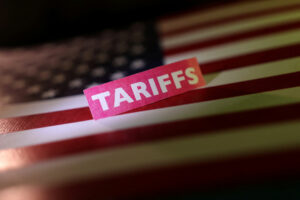By Aubrey Rose A. Inosante, Reporter
THE PHILIPPINES may have lost its edge in the US market as the US imposed a similar 19% tariff on imports from Indonesia, Cambodia, Malaysia and Thailand, analysts said.
Analysts warned this may undermine the Philippines’ competitiveness as it erodes the margin of preference and limits opportunities for trade diversion.
In an executive order signed on July 31, US President Donald J. Trump imposed a 19% duty on many goods from five members of the Association of Southeast Asian Nations (ASEAN) — the Philippines, Cambodia, Malaysia, Thailand and Indonesia. This will take effect on Aug. 7.
“What we’ve been saying before is that a 20% or even 19% tariff is acceptable — as long as our competitors have higher rates than us,” Philippine Exporters Confederation, Inc. (Philexport) President Sergio Ortiz-Luis, Jr. said in a phone interview over the weekend.
“The problem now in Asia is that countries like Japan and South Korea have even lower tariffs, and now we’ve been matched by Indonesia, Thailand, and the rest of the ASEAN+5, who are also our direct competitors. That’s where the problem lies for us.”
The Philippines had received the smallest tariff discount among ASEAN members even though Philippine President Ferdinand R. Marcos, Jr. met with Mr. Trump at the White House. The new rate is slightly lower than the 20% the US had threatened to impose, but higher than the 17% tariff announced in April.
Unliked the Philippines, other ASEAN countries received significant tariff discounts from the US, namely, Indonesia (from 32%) Malaysia (from 25%), Thailand (from 36%), Cambodia (from 36%), and Vietnam (from 46%).
At the same time, Mr. Trump set 15% duty on goods from South Korea (from 25%) and Japan (from 25%).
As the new US tariffs are set to take effect on Aug. 7, Trade Secretary Ma. Cristina A. Roque said the talks with the US are still ongoing to come up with a “mutually beneficial deal.”
“While some ASEAN member states got also 19% reciprocal tariff rate, I am not aware what deals or concessions were given for that because every country has its own sensitivities and priorities,” Ms. Roque told BusinessWorld in a Viber message on Saturday.
LOWER EXPORTSMr. Ortiz-Luis warned the higher US tariffs will dampen demand for Philippine goods, which will lead to lower exports for the US market. He said this also leaves no room for Philippine exporters to increase prices as regional competitors now have similar or lower tariff rates.
In June, the United States was the top destination for Philippine-made goods amounting to $1.22 billion, 35.2% higher from the same month a year ago.
“[Exporters] will be scared. We look to the government now to come up with mitigating measures to support our exporters. But I don’t know if the government is prepared to do that,” he said.
Mr. Ortiz-Luis also said the exporters group is still in the dark on the comprehensive details of the recent US-Philippines trade deal
Jose Enrique A. Africa, executive director at IBON Foundation, said “the Philippines loses much of the margin of preference and price-based advantage that the government was counting on to offset our underdeveloped manufacturing workforce, infrastructure, and ecosystem.”
He also said the changes in tariff rates in the region further reduce the chances of the Philippines benefiting from trade diversion or US manufacturers looking for supply-chain players.
“The right direction is definitely not to recklessly pursue more free trade agreements, since decades of such openness have already led to our premature deindustrialization and current inability to compete or take advantage of market access, even when it exists on paper,” Mr. Africa said.
Former Tariff Commissioner George N. Manzano said the Philippines is “not disadvantaged” even though it has the same US tariff rates as Cambodia, Malaysia, Thailand, and Indonesia.
“My only observation is that in relative terms, we paid a steep price in concessions in terms of tariff revenue foregone by agreeing to duty-free imports of US imports in some products compared to our ASEAN neighbors, because we had a reduction of only 1 percentage point from 20%,” Mr. Manzano told BusinessWorld in a Viber message.
Finance Secretary Ralph G. Recto earlier said the government is anticipating between P3 billion and P6 billion in foregone revenues following its decision to grant zero tariffs on selected US products such as automobiles, wheat, soy, and pharmaceuticals.
Meanwhile, Ms. Roque said the Philippines remains competitive as it recently introduced economic reforms such as the Corporate Recovery and Tax Incentives for Enterprises to Maximize Opportunities for Reinvigorating the Economy Act, and free trade agreements with other countries.
